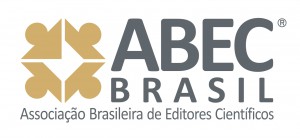Antisepsis through intravenous and intramuscular via for medicine administration
DOI:
https://doi.org/10.5216/ree.v8i1.940Keywords:
Local Anti-infective Agents, Hospital Infection, Primary Nursing CareAbstract
The skin shelters vast micro biota, which could penetrate more internal, layers during the medicine application through parenteral via, therefore the importance of antisepsis for this procedure. We aimed to identify the application of antisepsis through intravenous (IV) and intramuscular (IM) via for medicine administration as measures for the infection prevention. Descriptive study, accomplished with a nursing team, in eight units from an educational hospital in Goiânia’s district. The data was obtained through observation and filling out the check-list. We observed 212 professionals. As far as the administration via, 19,8% of the procedures were accomplished through direct IV via, 72,6% through IV via with an already installed system and 7,6% through IM via. Most of the professionals, 79,2%, did not wash their hands before accomplishing the procedure. From the 154 medications done in the venous system already installed, the disinfection of the rubber injector was not accomplished in 47 (30,5%). As far as the antisepsis, 72,4% of the medications were accomplished through IV via and 27,6% through IM via, but spite the use of the antiseptic in all the situations, only in 40,5% of the IV injections and in 37,5% of the IM were done five or more movements in the same way with soaked cotton with alcohol at 70%, which is the extolled procedure for the accomplishment for the skin antisepsis. After the antisepsis, 25 professionals touched the place, contaminating it, of these just 13 (52,0%) made new antisepsis, therefore, there was recontamination in 12 situations. The data reveals that: necessary measures for the infection prevention in the medicine through parenteral via are not always adopted, representing a challenge for the permanent education and for the infection control at the hospital in study.
Downloads
Published
Issue
Section
License
Copyright (c) 2006 Revista Eletrônica de Enfermagem

This work is licensed under a Creative Commons Attribution 4.0 International License.














